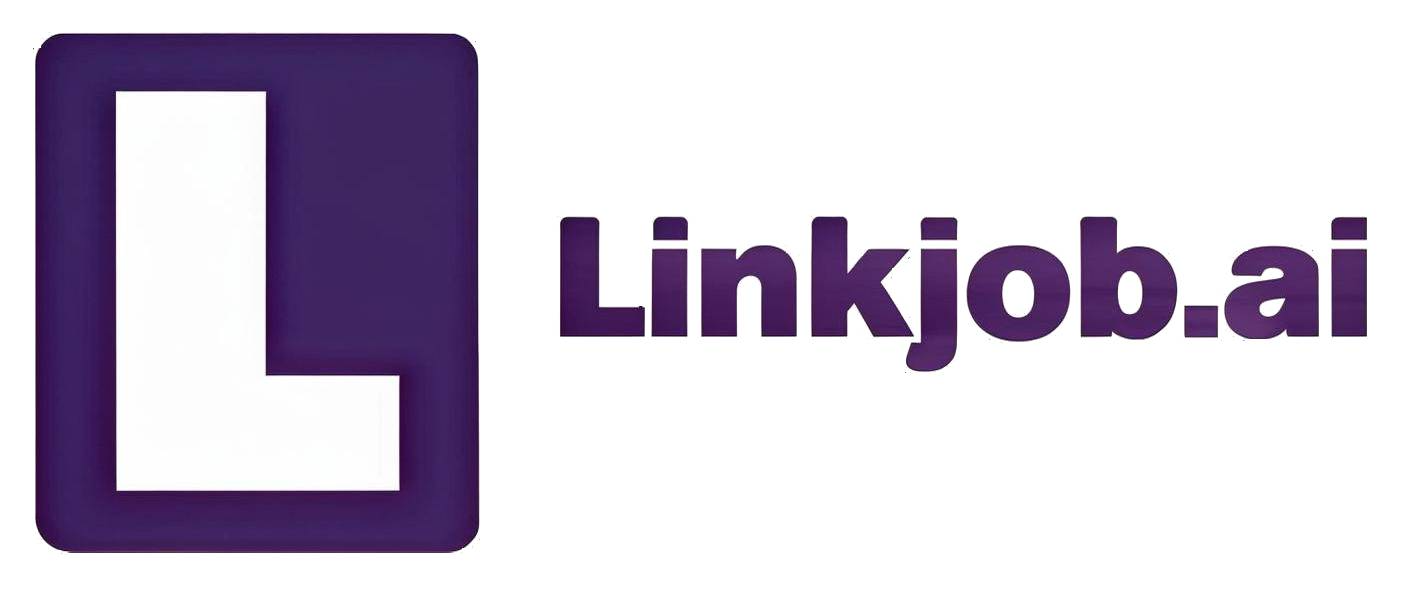Inside My 2025 Two Sigma HackerRank OA: Real Questions & Tips

Two Sigma HackerRank OA Questions
The Two Sigma SDE OA consists of two questions, completed on the HackerRank platform. You are given 75 minutes to finish them. Both questions are of medium difficulty, but the second one is slightly harder as it requires more abstract problem-solving skills.
I am really grateful for the tool Linkjob.ai, and that's also why I'm sharing my entire interview experience here. Having an invisible AI assistant during the interview is indeed very convenient.
Question 1: Server Traffic Monitor
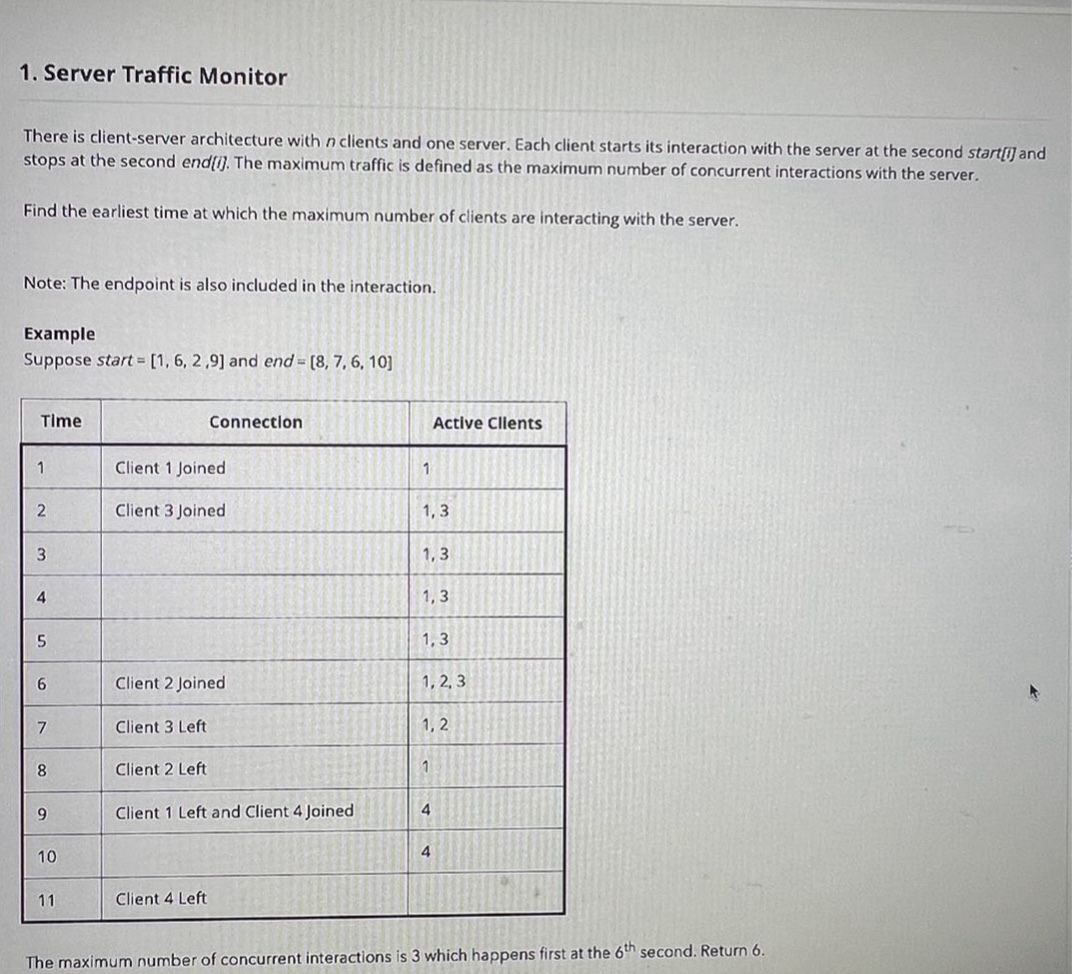
Solution Approach:
To solve this problem, we need to find the earliest time point at which the number of clients interacting with the server simultaneously (concurrent clients) is maximized.
Event Splitting and Labeling:
Split each client’s start and end times into “join” and “leave” events.
Label “join” as (time, +1) and “leave” as (time, -1).
Event Sorting Rules:
Sort events by ascending time.
For events with the same time, “join” events (+1) come before “leave” events (-1) because endpoints are inclusive. For example, if one client leaves at time t while another joins at t, the concurrent count should first increase and then decrease. Processing joins first ensures accurate concurrency counting.
Traverse Events to Count Concurrency:
Iterate through the sorted events while maintaining the current number of concurrent clients (current_clients) and the maximum concurrency (max_clients).
Record the earliest time when max_clients first occurs as result_time.
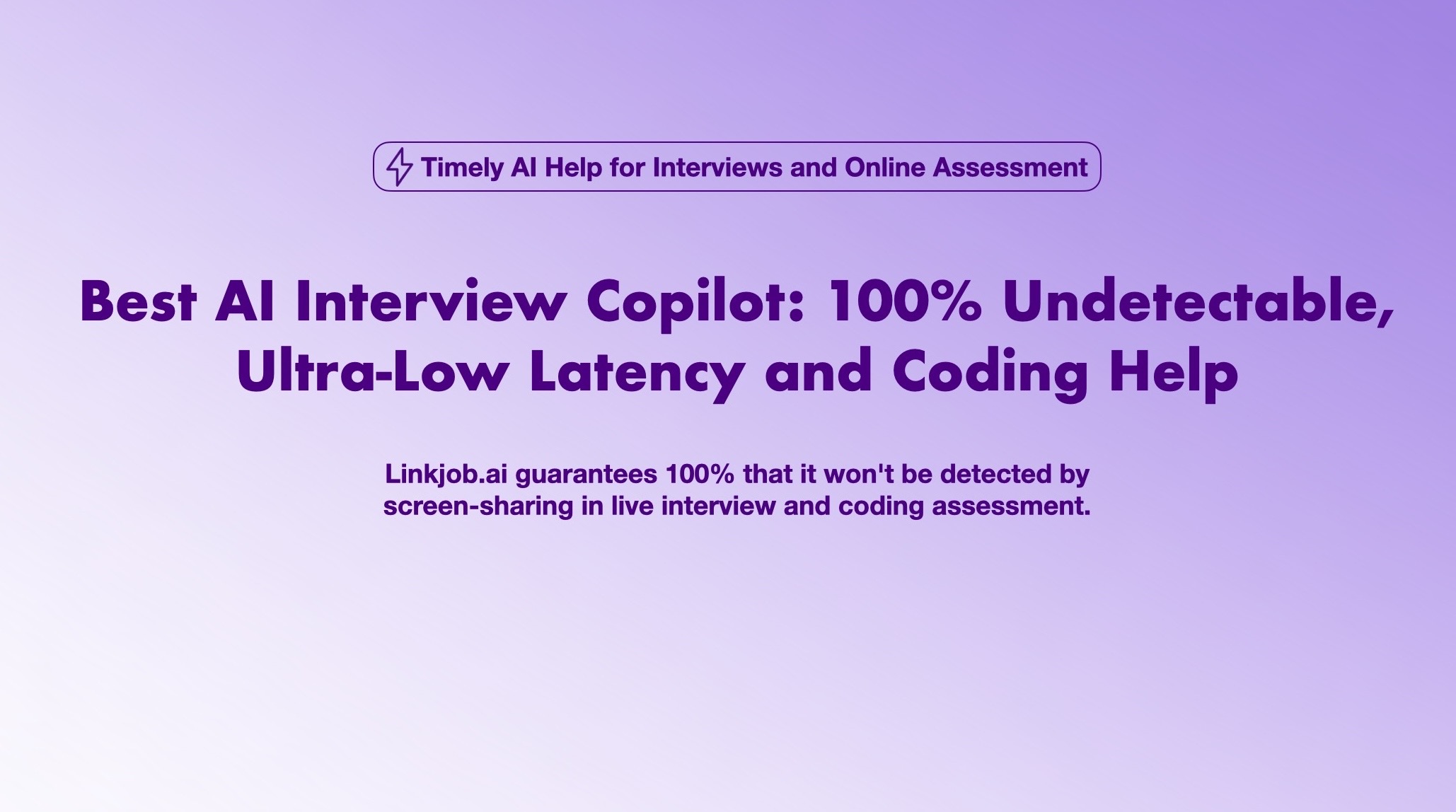
Question 2: Maximum Throughput
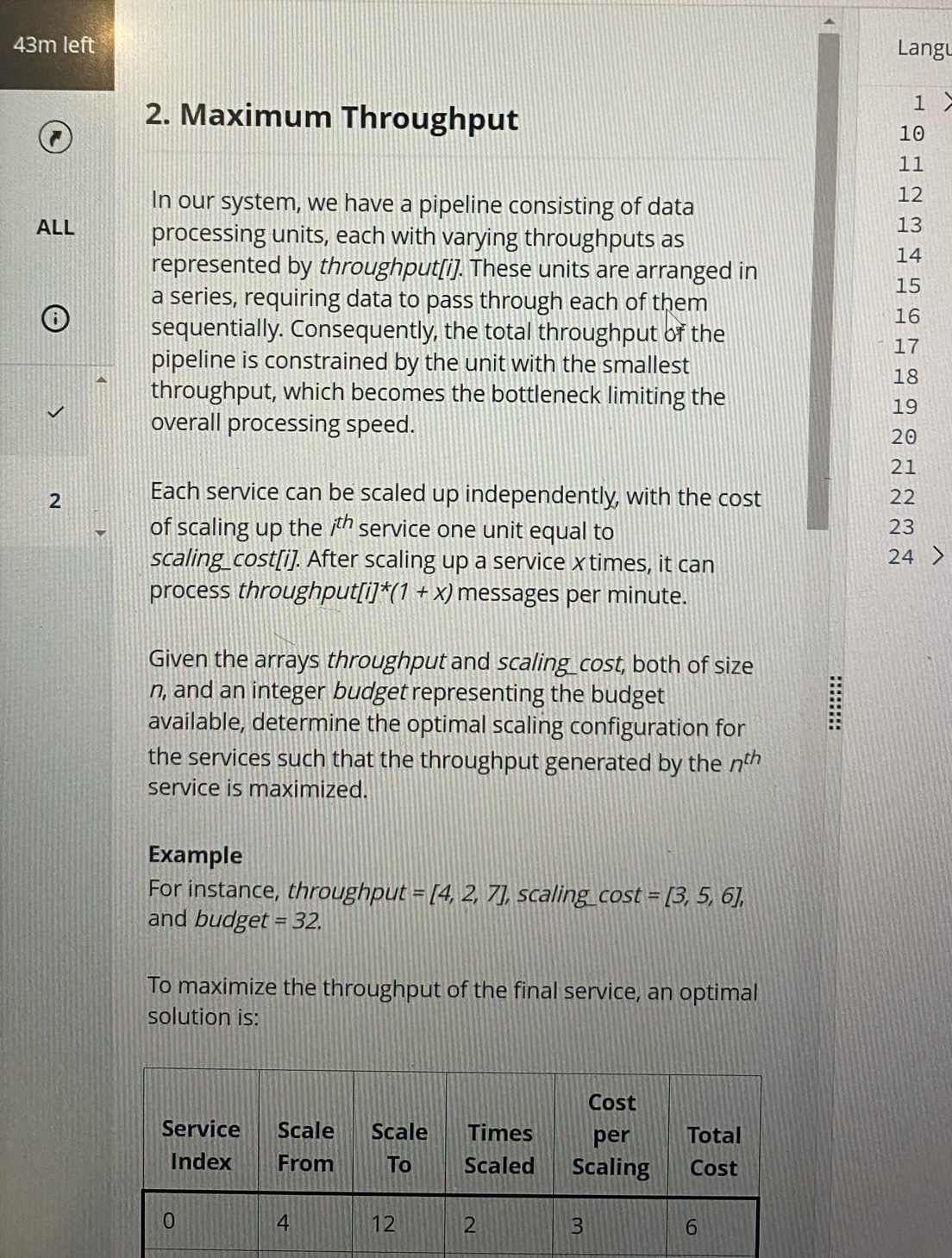
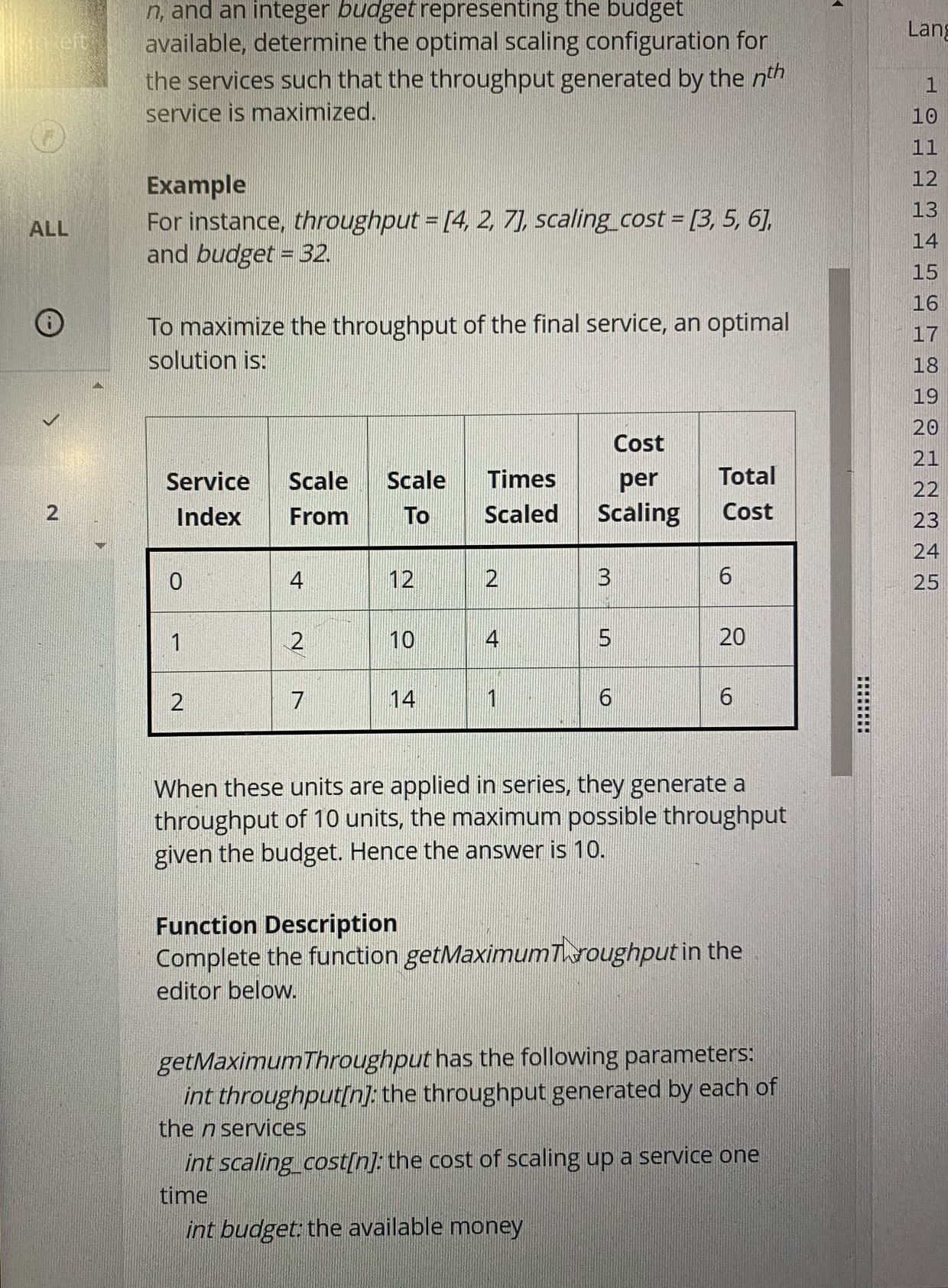
Solution Approach:
This problem involves expanding each service in a pipeline under a given budget to maximize the pipeline’s overall throughput (determined by the service with the minimum throughput).
Binary Search for the Answer:
Let the possible range for the maximum throughput T be [1, max_possible] (max_possible can be estimated by allocating the entire budget to the last service).
Use binary search to find the largest feasible T.
Feasibility Check:
For a candidate throughput mid, calculate the minimum cost to scale each service so that its throughput is at least mid. If the total cost does not exceed the budget, mid is feasible.
For the i-th service, the required scaling x_i satisfies:
throughput[i] * (1 + x_i) ≥ mid → x_i ≥ max(0, ⌈mid / throughput[i]⌉ - 1)Sum up x_i * scaling_cost[i] for all services and check if it ≤ budget.
Binary Search Adjustment:
If mid is feasible, try a larger throughput; if not, try a smaller throughput.
Both approaches efficiently solve the problems of “concurrent client time calculation” and “budgeted resource scaling optimization” using algorithmic ideas such as event sorting and binary search.
Practical Tips for the Two Sigma HackerRank OA
Step-by-Step Debugging
In the HackerRank coding environment, debugging efficiency often determines how well you perform. When dealing with complex logic, I recommend using a step-by-step validation approach: break your code into smaller functional modules and verify each part independently.
For instance, when solving the Server Traffic Monitor problem, you can print the sorted event list separately to ensure that “join” events at the same timestamp appear before “leave” events. This helps prevent later miscalculations caused by incorrect sorting rules.
When a test case fails, don’t rush to rewrite the entire code. Instead, print intermediate variables to pinpoint the issue. For example, while calculating concurrent sessions, print out the current time, delta value, and active count at each iteration to check if the values change as expected. This quickly reveals whether the bug lies in boundary handling or accumulation logic, allowing precise fixes within limited time.
Simplified Modeling Strategy
Two Sigma’s problems often mimic real-world engineering or system scenarios. Their descriptions may look complex, but the key is to simplify the model and extract the mathematical essence.
For example, in the Maximum Throughput problem, the total pipeline capacity is determined by the smallest individual component capacity. Under a budget constraint, the task can be reduced to: find the maximum T such that the total cost to upgrade all services to at least T does not exceed the budget. There’s no need to get distracted by non-essential “system operation” details.
Once you’ve built the model, test it using extreme cases. For instance, if the budget is 0, the maximum throughput should equal the smallest initial capacity; if the budget is infinite, throughput should be unlimited. Checking such cases helps confirm whether your model logic holds up. If it fails under these simple tests, the issue usually lies in your core formula, not in minor code syntax.
Safety-First Optimization
When time is running out and the problem isn’t fully solved, switch to a safety-first optimization strategy: focus on correctness before efficiency.
For example, when using binary search, if you’re unsure about the exact upper bound, pick a large safe value (like 1000× the initial minimum throughput). Though it may take more iterations, it ensures your code runs logically end-to-end instead of failing due to incorrect bounds.
For complex data handling, start with a straightforward but less efficient method to pass partial test cases, then refine as time allows. For instance, if you can’t immediately figure out the best event-sorting key, first sort purely by time and handle simultaneous events separately. Once the logic works correctly, merge it into a faster sorting routine.
This “get it working first, optimize later” approach maximizes your score potential under time pressure, especially useful when the clock is ticking.
Key Preparation Tips for Two Sigma HackerRank OA
Targeted Practice by Question Type
Two Sigma HackerRank OA tends to focus on two main types of problems: event processing and optimization.
For event-processing questions, it’s important to practice combining multi-condition sorting with dynamic state tracking. You should train yourself to quickly break down events, define clear sorting rules, and maintain real-time state updates. Try solving problems that involve sorting by start and end times and counting elements within time intervals. Repeating these problems helps you form a consistent and reusable problem-solving approach.
For optimization questions, focus on mastering binary search on the answer and greedy algorithms. In problems like Maximum Throughput, where you need to determine the best possible output using binary search, practice building accurate feasibility-checking functions for different cases. Also, work on greedy-style problems such as resource allocation or budget constraint scenarios to understand how local decisions can lead to global optimization. With enough exposure, you’ll be able to recognize the right approach as soon as you see the problem type.
Full-Length Mock Tests Under Real Exam Conditions
Because the HackerRank OA is strictly timed, it’s essential to simulate the real test environment during practice. Use an online coding platform and set time limits that match the real exam, such as 1 to 1.5 hours per question. During each session, go through the complete workflow, from reading and analyzing the problem to coding and debugging. This helps you get used to working efficiently under time pressure and prevents you from running out of time on problems you already know how to solve.
It’s also important to improve your ability to read and identify key information quickly. Two Sigma’s problems often include long descriptions with a lot of extra context. Practice filtering out the background details and focusing only on the core conditions and objectives. By doing this, you can save valuable time for writing and testing your code.
FAQ
What is the next step after completing the OA?
My next round was the Tech Screen. The task was to implement a hashmap from scratch without using any built-in hashtable libraries. The implementation needed to support two operations: get and put. The approach involved using a bucket array and linked lists, focusing on handling collisions and implementing bucket resizing.
Which programming languages can be used in the Two Sigma HackerRank OA? Are there any version restrictions?
Two Sigma generally supports all major programming languages, including Python, Java, and C++. The exact list will be specified in your test invitation. You don’t need to worry much about version compatibility. Common versions such as Python 3.x and Java 8 or higher are fully supported, and the differences between versions are very small, so no special adjustments are needed.

